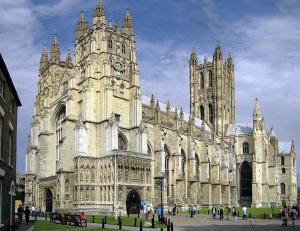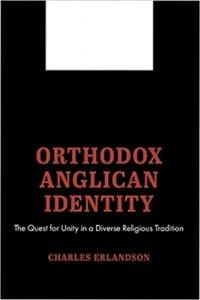 4 Orthodox Anglican Spiritualities
4 Orthodox Anglican Spiritualities
In my last blog I introduced stylistic definitions of Anglicanism and promised to look at what I consider to be 4 orthodox spiritualities. What these 4 orthodox spiritualities are and how they interact will be an important part of the future for Anglicanism in the 21st century. Can a renewed orthodox Anglicanism coherently incorporate all 4 of these and maintain an identifiably Anglican identity?
Historically, Anglicans have dealt with the problem of diversity through the ideal of comprehension, an ideal that developed largely as a consequence of the English Reformation and the Elizabethan Settlement, after which the Church of England identified itself as a church that was both Catholic and Protestant. Elizabethchose to achieve a political and religious stability by comprehending in one national church as many religious positions and identities as possible while still setting limits on comprehension so that the extremes of Roman Catholicism and Anabaptism or Puritanism were proscribed. The ideal of a limited comprehension was put into effect to a large degree by the structural authority of the state, including the use of legal power in such instruments as the Act of Uniformity as well as the use of state-mediated norms of Anglican identity such as the Prayer Book and Articles.
Along with the Catholic and Protestant elements that Anglican identity in the Church of England comprehended, it was later also assumed that Anglicanism had a certain Liberal element in it, one that affirmed the role of reason in the Church. In response to the Oxford Movement and the Ritualism that succeeded it, a new Anglo-Catholic identity was asserted in the nineteenth century that to some degree expanded the previous definition of Anglicanism. The ideal of comprehension was also expanded in the nineteenth century by Anglican thinkers such as Maurice at a time when the division between Anglican parties was so intense that a view of comprehension as the union of opposites or as things held in tension emerged. However, historically comprehension was not a celebration of toleration or diversity for its own sake but was a principled agreement on where fundamentals lie and where non-essential adiaphora (not in conflict with the fundamentals) lie.
The diversity among Anglicans that must be comprehended may be understood largely in terms of the distinctive spiritualities (or distinctive ethoses – or is it “ethi” or even “ethoi”?) that are to be included within orthodox Anglicanism. I believe that the traditional understanding of the spiritualities comprehended within Anglicanism is being modified by orthodox Anglicans from a comprehension of three spiritualities (Catholic, Protestant, and Liberal) to a comprehension of four orthodox spiritualities (Anglo-Catholic, Evangelical, Charismatic, and Global). Paul Avis (the external examiner at my oral defense for my Ph.D. thesis), among others, discusses a classical understanding of Anglicanism as being a synthesis or comprehension of Catholic, Evangelical, and Liberal elements. Avis sees these three elements, what I am terming “spiritualities,” as being inherent in the English Reformation. Against the claims of Rome, the English Reformers asserted the Catholic nature of the Church of England; in response to Puritan demands, they insisted that the English Church was also fully Protestant; and in both of these areas of controversy, the English Reformers made use of the new humanist learning of the Renaissance and made constant appeals to sound learning that are earmarks of a kind of Liberalism.
The orthodox Anglican spiritualities that currently exist represent several modifications to this traditional ideal of a comprehension of Catholic, Protestant, and Liberal spiritualities. One of the most notable changes from the traditional Catholic-Protestant-Liberal trichotomy has been the reluctance of contemporary orthodox Anglicans to affirm a specifically Liberal aspect. While theologians like Paul Zahl continue to make appeals to the freedom of inquiry that Liberalism classically represented, for most orthodox Anglican leaders today, “Liberalism” is often equated with a radical form of liberalism that undermines the supreme authority of Scripture. While orthodox Anglican leaders do not now commonly appeal to a Liberal spirituality, this is not to say that orthodox Anglicans have jettisoned a desire to use reason as an interpretive tool. Rather, the appeal to reason appears to have been absorbed within the identity of the four orthodox spiritualities.
The Catholic spirituality has been modified slightly so that the most common Catholic spirituality now referenced is the Anglo-Catholic spirituality. Following the Oxford Movement of the 1830s and 1840s, the Catholic spirituality in the Church of England expanded to include not only theHighChurchparty, the traditional Catholic constituency in the Church of England, but also those who eventually became identified as Anglo-Catholics. As a result of the great influence of the Oxford Movement and the consequent Ritualist Movement, the Catholic spirituality within Anglicanism has been, to a large degree, an Anglo-Catholic one.
There are, however, still many orthodox Anglicans who would consider themselves Catholic without being Anglo-Catholic. Among these would be groups such as the Prayer Book Society and churches such as the Reformed Episcopal Church (although the REC is not monolithic in its churchmanship.) This could be considered a fifth orthodox Anglican spirituality, I suppose. When I wrote my Ph.D. thesis I said very little about this group of Catholic Anglicans, although it best represents who I am, because I was most interested in the ways that various orthodox Anglican groups were contributing to a an increasingly broad and incoherent Anglican identity. Catholic Anglicans, however, tend to be traditionalists, which means they are less likely to innovate or broaden the boundaries of Anglican identity.
The Protestant spirituality is usually no longer referenced as a separate orthodox spirituality; however, the Evangelical spirituality in some ways has taken its place. In response to both the Evangelical Revival and the Oxford Movement, the Protestant “face” of Anglicanism has become, in many ways, the Evangelical party.
In addition, two new spiritualities have now become a part of a new orthodox Anglican comprehension: the Charismatic spirituality and what I will be calling the Global spirituality, both of which are largely twentieth-century developments and both of which are related especially to a pre-existing Evangelical spirituality. The Charismatic spirituality entered into Anglicanism in the 1960s, while what I’m calling the Global spirituality reflects the unique historical contexts of the global Anglican churches which in some ways look like the Evangelical or Charismatic Anglican churches and yet have their own history and identity.
In my next blog I’ll speak about how these spiritualities are contributing to an increasingly broad and incoherent orthodox Anglican identity.
Adoration of the Lamb from Van Eyck’s Ghent Altarpiece – from Wikipedia entry on Ghent Altarpiece









